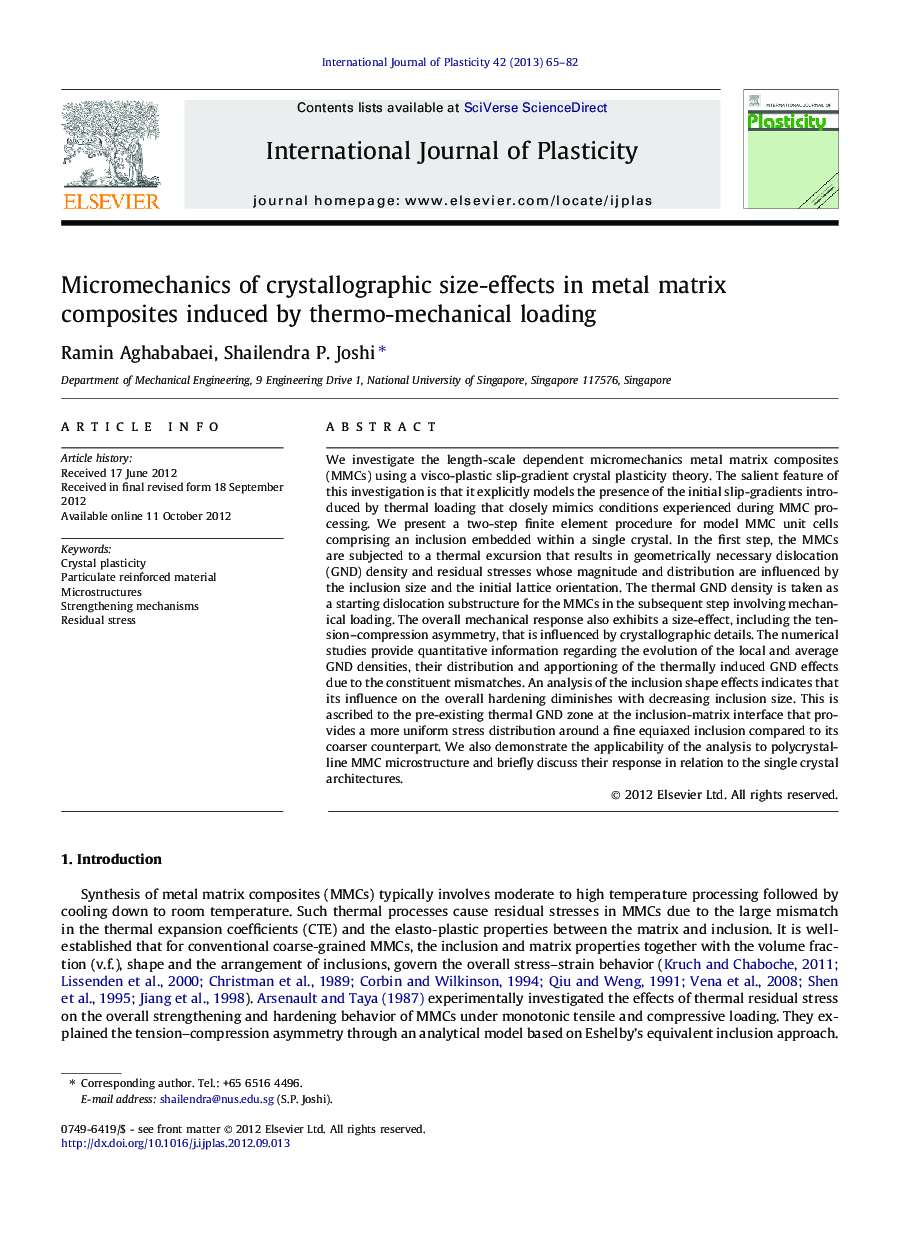| Article ID | Journal | Published Year | Pages | File Type |
|---|---|---|---|---|
| 786478 | International Journal of Plasticity | 2013 | 18 Pages |
We investigate the length-scale dependent micromechanics metal matrix composites (MMCs) using a visco-plastic slip-gradient crystal plasticity theory. The salient feature of this investigation is that it explicitly models the presence of the initial slip-gradients introduced by thermal loading that closely mimics conditions experienced during MMC processing. We present a two-step finite element procedure for model MMC unit cells comprising an inclusion embedded within a single crystal. In the first step, the MMCs are subjected to a thermal excursion that results in geometrically necessary dislocation (GND) density and residual stresses whose magnitude and distribution are influenced by the inclusion size and the initial lattice orientation. The thermal GND density is taken as a starting dislocation substructure for the MMCs in the subsequent step involving mechanical loading. The overall mechanical response also exhibits a size-effect, including the tension–compression asymmetry, that is influenced by crystallographic details. The numerical studies provide quantitative information regarding the evolution of the local and average GND densities, their distribution and apportioning of the thermally induced GND effects due to the constituent mismatches. An analysis of the inclusion shape effects indicates that its influence on the overall hardening diminishes with decreasing inclusion size. This is ascribed to the pre-existing thermal GND zone at the inclusion-matrix interface that provides a more uniform stress distribution around a fine equiaxed inclusion compared to its coarser counterpart. We also demonstrate the applicability of the analysis to polycrystalline MMC microstructure and briefly discuss their response in relation to the single crystal architectures.
► We investigate crystallographic micromechanics of MMC under thermomechanical effects. ► Mechanism-based crystal plasticity is adopted for single and polycrystal MMC. ► Heterogeneous thermal GND distributions cause non-uniform local matrix strengthening. ► Lattice orientation has stronger effect with equiaxed inclusions, than rounded ones. ► Random textures provide stronger thermal GND effects than highly oriented textures.
